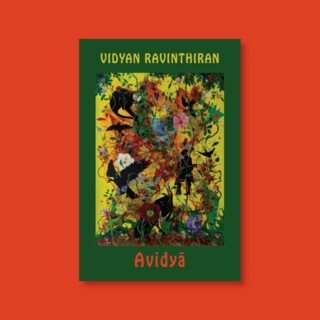‘The Institute of Signals and Noise and the Wail That Was Warning’: a Conversation Between Aura Satz and David Toop
Posted by Aura Satz & David Toop

EVENT: Aura Satz and David Toop will be playing at the Bookshop on Thursday 30 November. Book tickets now. Below, they discuss the origins of and themes underlying their collaboration.
Aura Satz (AS): When we first started to think about this event I mentioned a few ideas relating to a project I’m currently working on centred on sirens and emergency signals. Our conversations took us in all kinds of directions, across the spectrum from the barely audible to the unbearably loud, from small sound signals, alarm clocks, incense clocks, drones and dial tones, to the wailing howls of emergency vehicles and the animal realm. I had a preliminary title, ‘The Wail That Was Warning’, and somehow we ended up talking about your headed notepaper from the time you set up ‘The Institute of Signals and Noises’ (which then became the first half of the title). Can you talk a bit more about this?
David Toop (DT): I founded The Institute of Signals and Noises in the mid-1970s. It was a conceptual thing, really, or maybe just headed notepaper and attitude, but what it signified was an opening up to all kinds of sounds that lay outside the purview of conventional music-making and musicology. At the time I was trying to contextualise sound within the broader category of communication, so thinking about humans sounding and listening within an auditory field that encompassed everything: a burglar alarm, the acoustics of a railway station, ultrasonic signals of bats, the creaking of floorboards or knee joints. These days I wouldn’t use the word ‘communication’. Its implications are too narrow, too directional, but the Institute was a mild art-spoof of scientistic thinking and its institutions so it doesn’t matter. The real question for me was how could I as an individual with no power, no money and no influence get to exert some leverage on the limited categories that kept music and other aspects of audio culture so separate. One of the things that really fascinated me was inter-species communication. Was it possible to cross this great divide between humans and non-humans? There was some interest in the subject at the time but it tended to be trivialised. Now there’s a growing literature devoted to a greater understanding between humans and other entities. I’m thinking of books like Carl Safina’s Beyond Words: What Animals Think and Feel, Frans De Waal’s Are We Smart Enough to Know How Smart Animals Are? or even Timothy Morton’s Humankind: Solidarity with Non-Human People. The Institute of Signals and Noises was really a way to imagine or propose frameworks of sounding and listening within which a greater mutual understanding could develop. Like the Institute itself, they were usually impossible or silly but that was partly the point. There was a built-in feeling of self-deprecation: what can one person possibly do to affect the (in my view mistaken) belief that humans sit on the apex of all phenomena? One answer was to start by positioning yourself well below it and see what happened. Maybe you could explain the second half of the title?
AS: For the last three years I have been thinking about siren signals, trying to forge a new understanding of hypervigilance and emergency through sound as a perceptual trigger of high alert, a sonic prompt that structures attention whilst operating at the threshold between civil obedience and disobedience. Formally I have been working with glissando sounds and stroboscopic light patterns in my films and soundworks for a very long time, and in recent years I have veered into military histories, so I suppose it was kind of inevitable. The auditory qualities that appeal to me the most tend toward ambiguous, elusive sounds of the human on the cusp of the inhuman, generated by electronic signals or instruments such as the musical saw, the theremin or even the human voice itself. I particularly like the idea of shared, overlapping, entangled voices, and these kinds of sounds suggest precisely this slippage. The trope of ventriloquism has been useful in helping articulate a porous, permeable notion of voice, agency, authorship, ownership, who is spoken through, spoken of, with or to. I really relate to what you say about opening up sounding and listening beyond music. There are certain everyday sounds that have become invisible background noise, and yet if we were to pay attention, or think of them compositionally, we might recalibrate our understanding of the world and our place in it.
Recalibration is the guiding principle for my siren project. The siren is effectively a wail that warns and calls out, cries for attention, but remains background noise unless it’s coming for you (or you are physically obstructing its path). It has a very strange relationship to time in that it marks out future dangers and commands pre-emptive listening, but is also a signifier of tragedy, or a trigger for past traumas. We have talked quite a bit about time and this idea of listening forwards or listening back, connecting it to improvisation and being ‘in tune’ so to speak.
DT: Well, one of the things that makes improvisation interesting to me is that you are constantly working and responding in a present moment that retains a developing memory of what has happened but is always scouting ahead to stay alert to what might happen in the near future. That sense of futurity that you mention is founded in history, the knowledge of what has happened, yet it looks ahead in a very positive way. Even in an emergency siren there’s the message that disasters can be contained if we act now, based on what we already know from past experience. There’s an ambiguity in it which is typical of sounding phenomena.
Ventriloquism is so fascinating because it pinpoints the ambiguity of sound in space. It asks so many questions about voice in relation to body and consciousness. The illusion of a voice heard from a point seemingly outside the body, often from within another entity, is really spooky. That’s why it was so much a part of shamanic auditory practices, because it could create illusions of a room full of spirits, all moving around yet invisible. I developed an interest in shamanism at around the same time that my musical aspirations got serious, at the beginning of the 1970s. Partly it was a consequence of looking for exit routes out of the inevitable expectations of a music career, that you would make music to entertain people, to make some sort of commercial impact. A lot of questions were coming up: what if I just want to listen or what if I want to make music that has no recognisable precedent. As I got interested in ethnomusicology I learned more about the functionality of music in indigenous or first nation communities, that it wasn’t a separate thing for entertainment or art.
Shamanism had a rich auditory culture, using sound as a trance mechanism and representation of the spirit world, also a way of communicating with animals and spirits by using secret languages. That led me into bioacoustics and environmental sounds. Once you start to research animal sounds you become acutely aware that what we understand as reality is very limited. Human hearing works within a fairly narrow bandwidth calibrated more or less to the human voice, so we can’t hear a lot of what elephants, bats, dolphins or shrews have to say. In the 1970s I was making simple flutes and I started to use dog whistles, partly to explore the beating and heterodyning frequencies that come about when two or more closely pitched sounds are played simultaneously. It’s funny that auditory terms – ‘dog whistle’, along with ‘echo chamber’ – have entered the language of contemporary politics to join existing metaphors like ‘siren song’ and ‘alarm bells’. Dog whistle politics refers to a coded message – something racist, for example – that isn’t stated explicitly but is perfectly obvious to those in the know. The echo chamber is now commonly used to describe the effect of political argument on social media, through which people only get to hear their own views. Having worked for such a long time in the rather lonely field of audio culture, I wonder and worry about the way these metaphors are used and misused. I felt very alarmed, for example, when journalists started talking about Donald Trump’s rambling, free-associative speeches as a kind of ‘free jazz’. Having been involved in free improvisation for nearly fifty years I can say with some confidence that it’s a practice based on close listening, cooperation and sensitive responses, none of which are evident to me in Trump’s behaviour or mode of operating. In fact, he’s a prime example of somebody who uses dog whistle politics, the echo chamber, siren calls and alarms, sometimes all of them crushed into one tweet, to foment disorder, panic and destabilisation. This is when specialist knowledge of something like auditory phenomena becomes very important, so we know exactly what we are dealing with.
AS: Yes, I completely agree. There is no doubt we are at a crucial moment in which the concepts of voice and listening (as phenomena, experience and metaphors) are being profoundly transformed by the intertwined technological and ideological shifts of our times. Who can speak and be heard, who speaks on behalf of who, how is voice filtered, disseminated and distorted in the process? How is listening nuanced by echo chambers, what does it mean to retweet or repeat, how does our present attention economy shift our listening experience, how might the algorithmic listening, or eavesdropping, of technological interfaces be altering our democratic structures? All of these questions feel particularly raw and urgent at this point in time, with so much at stake. I am very much taken by the concept of ‘listening out’, drawing on the writings of Kate Lacey (Listening Publics: The Politics and Experience of Listening in the Media Age) and Lisbeth Lipari (Listening, Thinking, Being: Toward an Ethics of Attunement). ‘Listening out’ suggests an ethical obligation to listen out for otherness, for opinions that challenge and clash with our own views, for voices that take us out of our comfort zone rather than keep us trapped in an echo chamber of consonance. More than ever we need the kind of improvised, cooperative close-listening you describe, however hard this might be, especially in relation to political views one might find dissonant, or indeed abhorrent.
In many ways I have been trying to uphold ‘the sensitive instrument’, for want of a better word, as an intention, a methodology and a subject matter. Often I have worked with close-listening or amplification devices, technologies that allow for a recalibration of the way the eye and the ear construct meaning, and as such propose a new kind of looking/listening or a state of heightened attention. I also like to research the histories of people who have invented or used such devices and what new messages or patterns it allowed them to hear or see. Several of my films have been shot close-up, through a calibrating monitor viewfinder, and frequently the pulse or rhythm of the film is determined through the continual live adjustment of some variation of a tuning knob. My interest in sirens is at the other end of the spectrum of the kind of sensitive, close-listening experience, in that it escalates meditative attention to hypervigilance, where perceived threat can prompt an exaggerated response. I feel it is important to try to unpack this uncritical, impulsive way of being and responding, and maybe through examining these defense mechanisms one can de-escalate the crude, repressive and violent ways so much communication takes place.
In our previous conversations we have talked quite a bit about secret or impenetrable communication systems and the fact the the human ear seeks out the human voice and language – our ears are optimised for speech patterns and communication. But there’s another kind of listening that dwells in the humility of not grasping, deciphering or owning, and maybe to connect back to the idea of improvisation, time and memory, it’s a kind of listening that vibrates in the moment rather than jumps to conclusions or relies on old preconceived patterns. It opens up rather than narrows down. To quote Pauline Oliveros: ‘Quantum listening is listening to more than one reality simultaneously . . . Deep Listening – listening in as many ways as possible to everything that can possibly be heard all of the time. Deep Listening is exploring the relationships among any and all sounds whether natural or technological, intended or unintended, real, remembered or imaginary. Thought is included.’




